______________

‘My gender (female) has had absolutely no influence on my writing; it has had an enormous influence on my life. In my writing I think of myself as a poet, that is, in my writing my gender is poet, while in my life I think of myself as a woman, I have lived my life as a woman, a woman’s life. In my writing, gender becomes genre. Of course my life has influenced my writing, that I cannot deny; but I am denying the logic (clearly) that would then link my gender to my writing. I see the logic but I deny it; perhaps this is what makes my gender/genre poetry. In my life, I have a body, that of a woman; in my writing I have only my mind, that of a poet. There is something genderless (sex-wise) about the mind working in the art field; at its best it seems to me, to my mind, to be an encounter between the human mind and the universe, which is without consciousness and without gender. So writing is between mortal self-consciousness and all that it is not, all that is not it. This is true even if I write a poem that is peopled, addressed to persons or to one person, or is “about” something concretely feminine (such as a giving birth)—all these poems are still essentially a mortal self-consciousness exercising its existence, its ability to voice and imagine. The human imagination is a marvelous thing to have evolved on earth, and it did not evolve in one sex of our species only. In the past, it may have been believed that it evolved in one sex of our species only, but that belief was purely cultural (with unfortunate consequences). Even if, as I believe, and believe it has been shown, the minds of men and women have been rigged differently, that is simply circuitry (means) to the same end—mortal self-consciousness, the human imagination. And I am interested in this, the highest end of the wiring. The point of sameness, arrived at by different routes. My proof is that men and women die in the same way, to put it bluntly. The point of sameness in the different bodies. The skeletons retain gender in the width of the hip bones, yes, I don’t deny that the difference is still there in the bones, but what of the mind that has vanished? The vanishment is identical—each equally gone. But to return to what I was saying (for I am still alive)—writing is between mortal self-consciousness and all that it is not, all that is not it, while life is carried on between one body and another in a wide variety of relationships and groupings. I never write with another body in the room, changing the flux of my mind. I am absolutely free to do whatever I want, in my writing, until I die, at which point the universe changes my flux of mind by ending it. Diseases of the mind challenge this assumption, but I will not go into that at this time (that would lead us to the question of what constitutes life—health of mind or health of body). In my life I must take into consideration the person with me, and the ways in which a person does that—takes into consideration another person—constitutes one of the great struggles in life, the failures and successes of mutual consideration. Therein lie many tragedies and comedies. In my life I am also bound by cultural and societal restrictions and regulations, some of which I agree to (I do not think I should be free to take off my blouse in a restaurant), some of which I do not agree to (I know with documented certainty I have been paid less than a man for doing identical work). But when I write, I take into consideration not another body but space, abyss, time, pulse, and this encounter constitutes the other great struggle in life—that of the mind in consideration of mindlessness. The simplest I can put it is to say this: my life is the struggle between bodies (mind with minds), while my writing is the struggle between mind and what is without mind. This is my letter to the World / That never wrote to Me. I know this line can be interpreted in other ways—ways that take bodies into consideration—but I interpret it as a statement between mind and that which is mindless.’ — Mary Ruefle
Mary Ruefle Site
MR interviewed
The Debut of Mary Ruefle’s Erasure “Melody”
The Life-Long Sentence
Buy ‘My Private Property’
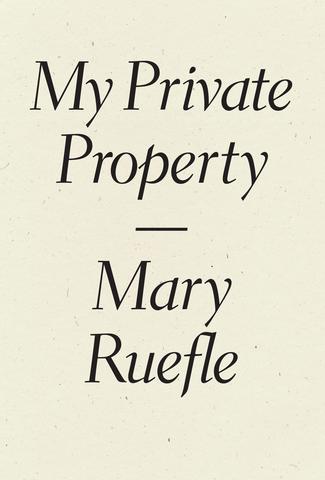 Mary Ruefle My Private Property
Mary Ruefle My Private Property
Wave Books
‘Author of Madness, Rack, and Honey (“One of the wisest books I’ve read in years,” The New York Times) and Trances of the Blast, Mary Ruefle continues to be one of the most dazzling poets in America. My Private Property, comprised of short prose pieces, is a brilliant and charming display of her humor, deep imagination, mindfulness, and play.’ — Wave Books
Excerpt
It is sad, is it not, that no one today displays any interest in the art of shrunken heads. Men, women and children walk on streets, they cross fields and enter forests, they run along the edges of oceans, but none of them, to the best of my knowledge, are thinking about shrunken heads. I am thinking about shrunken heads, but keep the thought to myself, that is, inside my head, for if the subject is raised at all, it is met with horror, on account of the violence involved in the necessary removal of the head before you can shrink it. But as an art and a conception, the tribes of the Amazon displayed a genius that deserves our awe; miniaturizing and preserving a human head is a glory and wonder on the scale of the great Pyramids. I recently encountered a passage on shrunken heads in Kon-Tiki, the bestselling account by Thor Heyerdahl of his journey, with five companions, on a simple wooden raft that set sail from the coast of Peru in 1948 and landed on an uninhabited South Sea Island 101 days later. The journey, which even professional mariners thought would end in disaster, was undertaken to prove Heyerdahl’s theory that Polynesia was settled by peoples of the South American continent. It is not a book that is much read today, but the copy I found at the Goodwill was in its twenty-first printing in 1962, so it is fair to think that for many years people did think about shrunken heads, which are mentioned in passing on page sixty-two. By 1948, when Heyerdahl and his men were building their raft in a naval yard in Lima, the market for shrunken heads was strictly an illegal one, but there were still people who made their living selling the desiccated top portion of the human body. The Amazonian jungle is very dense and such a thing is hard to control. Heyerdahl’s account is brief and sketchy but one learns that it is done like this: after the requisite decapitation, the skull is somehow smashed and removed, leaving the skin of the head intact, like a sack of flesh, which is then filled with hot sand, which causes the sack to shrink without losing its shape or any of its features. The shrunken head is about the size of an orange. One of Thor’s men, who had lived in the jungle a long time, had a friend who was murdered and whose head was shrunken; a promise was made to spare the murderers in exchange for the head, and so the little head was eventually handed to its widow, who fainted. Thereafter it was kept in a trunk where it mildewed and from time to time had to be hung by its hair on a clothesline and left in the air to dry. Every time its widow saw it, she fainted. One day a mouse got into the trunk and that was the end of the head. To be eaten by a mouse! To be eaten by worms is charmless and inevitable. But for your head to be nibbled at by a mouse, for your head to become a bit of moldy cheese on a plate—that was something that spoke volumes about reversals of power, about foolishness and vanity. It reminded me of an eighteenth-century Japanese drawing I had once seen—Mice Transcribing a Book, by Kawanabe Kyosai—in which red-eyed white nice wearing kimonos are kneeling at a low desk transcribing a book, while off in the corner naked black mice are devouring the pages of another book. Am I vain to think of my head as a book? Am I not transcribing the book of my head as I write? To be eaten by a mouse! I had to learn more, so I did some research and found a more detailed account of how it is done, a method used by the Jivaro Indians of the Ecuadorian and Peruvian Amazon, who, as far as I can tell, are known today as the Shuar; these ethno-centricities become amazingly complicated. The Jivaro, or Shuar, slit the head-flesh up the back to remove the skull, throwing the skull in the river to appease the river Gods. The eyes and the mouth are sewn shut, to paralyze the spirit, which having died violently, would be bent on revenge. The flesh-head is boiled for two hours until the skin is dark and rubbery and one-third of its original size. The skin is then turned inside out and any flesh still sticking to the inside is scraped off, then the head is turned back and by this time resembles an empty rubber glove. The final shrinking is done with sand, and hot stones dropped one at a time through the neck opening, constantly rotated inside to prevent scorching. The sand enters the places the stones cannot, the crevices of the nose and ears, and hot stones are applied to the exterior too, to seal and shape the features. Surplus hair is singed off and the finished product hung over a fire to harden and blacken. A heated machete is applied to the lips to dry them. The lips are lashed together with native fiber. The word for shrunken heads is Tsantsa (pronounced san-sah) and the process has been in existence for as long as anyone can remember, an art so old it has no known origin. It takes about a week to shrink a head, the artist working daily. A ceremony follows where a string is inserted in the head so it can be worn around the neck, for the head of the slain enemy is a trophy, a living trophy of sorts, for it contains the spirit of the vanquished. Some tribes, though, didn’t keep the heads after the ceremony but fed them to animals or gave them to children as a plaything to be lost. In this instance, they are dolls, but with a difference—they are real dolls, every girl’s dream. It is hard to fake a shrunken head, but once they became a commodity—enter the white man—many tried. Some clever folk used unclaimed bodies at the morgue or other animals altogether, such as the heads of monkeys and goats. Where there is value, there will be experts, and experts say that nose hair, and ears, are hard to fake. An expert examining a shrunken head to determine whether or not it is real is not unlike an art expert examining a supposed Rembrandt to determine whether or not it is real: magnifying glasses are used. But I keep thinking about the mouse, who didn’t care or know if the head was anything other than a real meal. We eat jerky don’t we? Most of all, I like the idea that a head can continue to have a fate after it’s dead. And the story of the widow who fainted every time she saw her husband’s head on the clothesline took me back to my own first encounter with a shrunken head. When I was sixteen years old and in school in Brussels I would very often play hooky, skipping school it is also called, and always when I did I did the same thing, I took a tram to the outskirts of the city and wandered through that marble mausoleum called The Congo Museum. I may not have been a writer at sixteen, but I was most emphatically a daydreamer, and felt deliriously happy to be free, wandering under the hanging canoes, staring at the stuffed elephants and peering into the eye-holes of masks, with which I felt I had a special relationship. Of course I am filled with retrospective shame, but not for my feeling of freedom, freedom is something one should never feel ashamed of, but for my sheer and utter ignorance; I can now say that my ignorance was not in any way caused by my absence in the classroom, I can assure you my school did not teach what I now know to be true—that the museum I wandered in was built on rape and plunder and pillage and oppression and murder, that everything in it was stolen, that the very wealth necessary for such acquisition was stolen, wealth acquired by force of so filthy and unspeakable an evil our heads cannot fathom it and have no single word for it, but must resort to endless corridors of words, each corridor turning into another corridor a thousand miles longer than the last in our hopeless search for some inner chamber of understanding that does not exist. Among these millions of words there are two, rubber and ivory, that stand alone, that break off from the others and river around the world in the form of automobile tires and jewelry and piano keys. But commerce and culture quickly lead us down a corridor leading to more automobile tires and jewelry and piano keys, and their equivalent, money, and I want to go the way of shrunken heads, and dolls, soft rubbery flesh and ivory-like porcelain, skin and bones, faces and masks. At sixteen, I was not much the other side of dolldom, so it is little wonder that there in the Congo Museum I fell in love with a shrunken head. I would do the same today, for I doubt much has changed in that old museum except for the signage. Of course, the head was not Amazonian but African. I don’t know how the art evolved on that continent, but genius flourishes everywhere, it has always been so and will always be so, and there will always be people who believe otherwise. As I said, a shrunken head is as close to a real doll as one could ever come, and in this sense it is both a child’s toy and an adult toy—it’s another person after all—and I was not then, nor am I now, immune to the charms of having someone else to play with. He was dangling from an invisible thread, much like a spider does, from the top of a glass case taller than I was. He was the size of an orange. He was particular and unique and human and utterly real, a man with eyes and eyelashes and hair. It was only later that I learned that the hair and eyelashes do not shrink with the flesh of the face, and so the shrunken often have the luxurious eyelashes of a child, and the hair is much longer than the face, though often cut, so great is the human impulse toward proportion. But my man had long uncut hair, and as it was 1969 I didn’t think anything of it; all the men I liked had long uncut hair. His skin had the sheen of an eggplant—it must have been oiled—and all the purples of that fruit were in it; his nose was broad and flat, his eyes deeply set, unnaturally so, and beautifully shining, but so many years have passed I cannot be sure of what was there and what was not, though I returned to look at him countless times; he was, after awhile, what I came to look at, and at some point I began to commune with him. I don’t remember what it was we communed about, but he possessed me as I possessed him, and to possess the head of a beloved, no less than the head of an enemy, is the greatest sickness on earth. I could enter the museum blindfolded and turn exactly the right corners, one after another, to find myself standing before him at eye-level. I shall never forget his expression: he looked startled. No other words come to mind. And though I could not see myself, I must have look startled, too. We stood facing each other the way, when you come upon a deer unexpectedly, you both freeze for a moment, mutually startled, and in that exchange there seems to be but one glance, as if you and the other are sharing the same pair of eyes. The years passed. I left the city, I never returned, the signage in the museum changed, of that I am sure, but the impression left upon me by the shrunken head has never changed, so that I now wonder why human beings do not incorporate the art of shrinking heads into their burial rites. I am serious. What prevents us from saving the heads of the dead we bury, since we can make them the sizes of oranges (or apples), and keeping them, out of the deepest love and respect, for our descendants, for whom the heads will become ancestors, for what are ancestors but the loved ones of our loved ones, since a single act of love, down through the ages, has procured what we call the future? I am presuming, of course, that procreation involves love, which it very often does not, and so I hesitate to say love is the greatest traveler, I could just as easily say sex; perhaps love is but symbolic behavior toward sex—it is certainly symbolic behavior toward the living and the dead. I am most interested in shrunken heads as symbolic behavior toward the dead. Marks of being a human involve symbolic behavior toward the dead; no other animal does it to the extent humans do. Don’t we carry photographs of the heads of those we love who have died? Don’t we frame their heads and keep them on the mantle as a reminder of all that is precious and binds us to this life? And before there were photographs, that rage of the well-to-do, that sign of commerce and culture, there were hand-painted miniatures (if you could afford them), exquisitely detailed renditions of the head, kept in a protective locket or box that could be carried inside a jacket or coat. Someone leaving on a long journey would carry such a head. A Belgian officer or intrepid explorer would carry such a head into the African jungle. Surely Commandant (afterwards Baron) Dhanis, making his way toward Katanga, carried such a head, and surely from time to time he took it out of his coat or jacket and looked at it. And his heart was filled with love, even if that love did not extend to the foliage around him, nor to the people whose habitat it was, several of whom were artists in shrinking heads, no less than the miniaturist. The human heart is hard to fathom, no less than the human head. They both contribute to human behavior, the hardest of all to fathom. I don’t know when psychiatrists and psychologists were first called shrinks, but the term has stuck. I confess I don’t understand it myself, for my personal experience with psychotherapy is that it expands the head in wondrous ways, it educates the mind to view itself, and others, from new perspectives amounting to vistas. There is nothing small about it. I first began seeing a shrink after the death of my mother. I was then in my mid-forties and considered myself highly intelligent. A large part of my intelligence depended on my total ignorance of how ignorant I really was. I was not unlike Commandant Dhanis, the Belgian aristocrat who carried a miniature head into the jungle without realizing the Congolese were far superior in that art. Even today, when I muse about preserving the heads of loved ones by post-mortem shrinkage, I am ignorant; I seldom stop to consider the obstacles and absurdities of my plan. My mother’s head, for example, could not have been shrunk by any means, as she died from injuries sustained in a gruesome accident, which resulted in her head, during the few remaining weeks of her life, swelling to inhuman proportions. My mother’s head went, rather quickly, from the size of a head to the size of a watermelon to the size of a prize-winning pumpkin. It was impossible to look at it (her) unless you pretended you were watching a horror film and that it wasn’t real, but a kind of doll fashioned by special effects. At least that is how I remember enduring one such viewing. Unlike a shrunken head, when a human head is enlarged it cannot sustain its features, the eyes and the nose and the mouth all disappear in one gigantic gelatinous mass; such a head does not remotely resemble the person it belongs to. So much so, we pinned a photograph of my mother over her hospital bed so that the doctors and nurses might know what their patient looked like. It seems strange to me now, the gesture of that photograph, as none of the medical staff knew her before her accident, and there was no hope at any time that her head would deflate to that of a recognizable person.
28 Short Lectures: Mary Ruefle | Woodberry Poetry Room
Mary Ruefle Poetry Reading
“Glory” by Mary Ruefle
________________

‘I want literature to compile a collection of 800 images from the archives of SJX. I want literature to compile a collection of songs from the archives of MATTRESS GRAVE. I want literature to compile a collection of words from the permutated words and archives of SJX. I want the internet to wormhole these images + songs + words into a perpetual rabbit hole.
Why? – because we want to tell loud stories in her ears with one extra hospital bed in case of a dire need.
Where? – the sea of the internet, people in residential suburbs all logging on, people going back into cyberspace looking for anybody, a distant collection of friends who resemble a patchwork of important microchips.
Who? – the internet + literature + SJX + our faces + our imaginations that are darkly comic + our shipmates + fellow ingenious gamblers – we’ll make the internet whole again, construct it out of liquid brambles + scientific nettles + the dry ice of thistles, a quickset hedge of technology.
How? – surely as the glittering air + wind blows up the avenue – this project of Acid Shottas + SJX will prostrate trees + the next morning after this projects completion we’ll sleep late + ask the internet to fawn all over us – that’s how.
What? – I’ve said what – it’s basically the electronic equivalent of eternity wearing dungarees, looking all rather pale, muscle arms all shining with grease, tattoos grey with dirt.
When? – ASAP. — Shane Jesse Christmass
Shane Jesse Christmass @ Facebook
SJC’s tumblr
SJC @ Twitter
sjx.digital
Buy ‘Police Force as a Corrupt Breeze’
 Shane Jesse Christmass Police Force as a Corrupt Breeze
Shane Jesse Christmass Police Force as a Corrupt Breeze
Dostoyevsky Wannabe
‘A novel. A series of itinerant scenes set in Washington, Manhattan. Science Fiction. Body. Manhattan. Arrival @ JFK. Death lands. Police Siren. Paper strainer. Fingers. Sheets. Banks. Newspaper. Alms box. Penn Station. Fall bleeding. Fleeing. Ravenous eyes. Humped from Hudson River. 42nd Street. Late lunch. Hash Browns. Draught Beer. Waiter. Piss-logged. Subway platform. Business calls. Madhab in car park. Cum. Carlos. Clean-living. Hurting. Yonkers racetrack. Edward G. Robinson. Vomit. Purity. Underage guy. Frantic homeless men fuck, Sadly strange men. Carlos. Kind man. Potential bodies. Bodies. Street phrases. Girl enters. Body. Basketball court. Prosthetics. Tears. Robots. Unusual animals. News tickers. ISIS. Civilian clothing. Mace rifles. Swallow Body. Free hand. Military votes. New leader. Dire. LCD. FDR. Drive. Off-ramp. Bombs. Violence. Blonde hair. Carlos. POTUS. Television screens. Human-machine symbiosis. Government interference.’ — Dostoyevsky Wannabe
Writing by SJC
Plastic bags move frantically in time with unfathomable shitness. Knowbots scan the New York Power Authority for imminent blackouts. Ginny lifts her shirt collar up. A watering can in her right hand. Ginny snaps out of her blackout. She’s outside Gramercy Park. Ginny walks down from the intersection. A noose draped from the electricity pole. Shards of windscreen in a building site projecting the image of midday 1985. Ginny wears black slippers. Music fumbles from these black slippers. Ginny inspects the inside of her black slippers. Coal lumps at a bus stop. Ginny’s throat has tension and then none. Choking and limbs slowing let down. Ginny feeling within the Lower East Side. Ginny with sunglasses over eyeballs. A long coat over her body. Weeks of shoe polish washing in from Little Italy. A thin woman pushes through the fog. Graffitti all over the courthouses in Foley Squarae. Sadness. Ginny looks inside her hospital locker. Her fingers dangle like key chains. Her hands up against the mirror. Slowly and repeatedly. Steam on mirror, steam in bathroom. Cab drivers riding people over to the mall. Tourists telling fibs. Hair pushed back from forehead. Jeans in a tight-style. Cool morning air pumping in from Worth Street. Men with testicles all stooped on the ground, lope around Bayard Street. People dancing on gasoline. Disease in the air and tone tongue orchestras playing near South Street, the entrance to Brooklyn Bridge. Ginny’s lips. A mound of clay underneath Brooklyn Bridge. No one knows who placed it there. Garrottes draw blood from the broken window. Ginny trails her fingers along the wall. Cum in her hand. She smears it all the wall. The sound is vast. Financial organisations collapsing around Ann Street. Moustaches and women with waxed shins. Fungaql spores feel good in the stomach. Ginny smokes a Camel. Turns, walks off, pulls down her cap. Snowballs melting in Park Row. Desert sands winding around the Southbridge Towers. Little bones of the long minutes. Homicidal enthusiasts robed in rubbish wrappers and newspaper. Ginny swings left to right across Spruce Street. She chokes at the back of the bus. Ginny studies the subway timetable. She gets on at Grand Street Station. Cracked lips and cooling towers in Tribeca. NYC’s nature. Delays in getting out to 14th Street. Camel cigarettes smoking in Brookfield Place. A country will in war pull rank and leave you just with the lowly ranks. Burton sets the world at chance, in possibilities, and after a dose of stimulants, immunity. Orchestral sounds varying in pitch come from the Winter Garden Atrium. The music of ordinary meat. Ginny’s jawline. Ginny gags. Grimy smudges of name-calling. Police in darkness seize their prey. Despotic rats with no other form of unity. They need to stake a claim in commerce. Over-hated. Hauled in. Indifferent to everything. The doormat. Ginny’s legs. Her grazed knees. Ginny strangles herself.
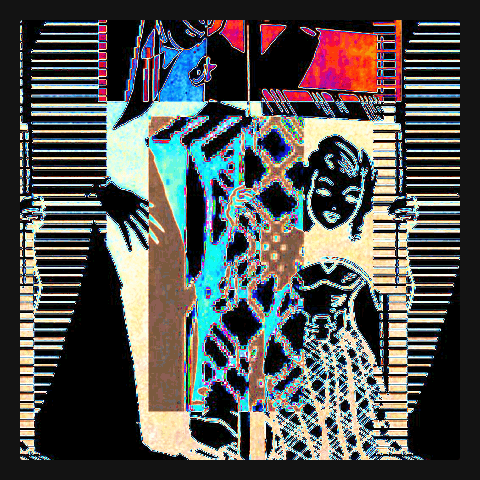


________________

‘Molly Brodak tells the story of her father, a gambler and bank robber who was an enigmatic, pervasive presence in Brodak’s life. In piecing together the history of his life, and the histories of his relationships with her and her mother, Brodak is trying to reconcile both halves of him: the parts that tried to participate in their lives and encourage them to have fun, as well as the parts that lied, stole, and hocked the car. It’s not just the good parts that are real; it’s that duality that makes him whole. Brodak includes a great deal of reporting in this piece. She recounts conversations her mother had before she was born–namely with the woman her father was married to when he and her mother met–and shares things her aunt told her in letters about her father, about how he was born in a displaced persons’ camp in Germany a few months after WWII ended.
‘I get the sense that Brodak is at once possessed by her father and is also trying to possess him, to go back to all the times in her childhood when he wasn’t there, and now, as an adult, to know where he was and what he was doing instead of being left hanging, wondering for hours at a time:
I want to say plainly everything I didn’t know. I didn’t know Dad gambled. Sports betting mostly, on football, baseball or college basketball, point spreads, totals, money lines, whatever was offered. Bookies, calls to Vegas, two or three TVs at once. I knew there were little paper slips and crazy phone calls and intense screaming about games – more intense than seemed appropriate – but it only added up to a kind of private tension orbiting him. I didn’t know what it was.
‘Brodak’s prose is as dense and full of depth and meaning as it is plain and familiar. It’s like sitting and listening to a friend tell you about what their childhood was like, but with a greater sense of empathy and self-reflection than could ever be captured in a conversation. She is curt and clear with the facts, recognizing that this is not where the story lies:
Dad robbed banks one summer. … I was thirteen that summer. He went to prison for seven years after a lengthy trial, delayed by constant objections and rounds of firing his public defenders. After his release he lived a normal life for seven years, and then robbed banks again. There: see? Done with the facts already. The facts are easy to say; I say them all the time. This isn’t about them. This is about whatever is cut from the frame of narrative. The fat remnants, broken bones, gristle, untender bits.
— Olivia Campbell
Molly Brodak @ Twitter
‘Flint’, by Molly Brodak
TURN DOWN FOR EVERYTHING: AN ANNOTATED PLAYLIST
In Conversation With Molly Brodak
Buy ‘Bandit’
 Molly Brodak Bandit: A Daughter’s Memoir
Molly Brodak Bandit: A Daughter’s Memoir
Grove Atlantic
‘In the summer of 1994, when Molly Brodak was thirteen years old, her father robbed eleven banks, until the police finally caught up with him while he was sitting at a bar drinking beer, a bag of stolen money plainly visible in the backseat of his parked car. Dubbed the “Mario Brothers Bandit” by the FBI, he served seven years in prison and was released, only to rob another bank several years later and end up back behind bars.
‘In her powerful, provocative debut memoir, Bandit, Molly Brodak recounts her childhood and attempts to make sense of her complicated relationship with her father, a man she only half knew. At some angles he was a normal father: there was a job at the GM factory, a house with a yard, birthday treats for Molly and her sister. But there were darker glimmers, too—another wife he never mentioned to her mother, late-night rages directed at the TV, the red Corvette that suddenly appeared in the driveway, a gift for her sister. Growing up with this larger-than-life, mercurial man, Brodak’s strategy was to “get small” and stay out of the way. In Bandit, she unearths and reckons with her childhood memories and the fracturing impact her father had on their family—and in the process attempts to make peace with the parts of herself that she inherited from this bewildering, beguiling man.
‘Written in precise, spellbinding prose, Bandit is a stunning, gut-punching story of family and memory, of the tragic fallibility of the stories we tell ourselves, and of the contours of a father’s responsibility for his children.’ — Grove Atlantic
Excerpt
from Fanzine
The sky. It being solid and grey and quiet, how it stays in the North. Pulling up to the prison’s entrance and I had a feeling that I had seen this particular slope in a dream, this sign, these colors. The complex sat atop a treeless hill, one small intake building with enormous mirror-polished doors and the other buildings set back from there, in neat lawns and sidewalks and activity fields. We walked up to the black mirror doors, watching ourselves approach, watching our watching silently.
My boyfriend and I got there at the beginning of visiting hours. Everyone else knew how to do this complicated process, for which there were no instructions, and were happy enough to tell me it as I stupidly cut in line. Forms and ID were presented, a debit card for the vending machines inside, and everything we brought was stored in a locker. Our names were called, hands stamped with something invisible, and we passed through a metal detector, joining a clump of visitors now on the far end of the building. We waited again, inspecting the photos on the wall of previous wardens and other prison officials, sort of joking about their names quietly, attentive and antsy. A man’s arm poked through a small door and we presented our hands to a purple light it held that made the invisible stamp glow, then we lined up at the exit door.
Waiting at the exit, I stood next to a window where the razor cyclone wire border was cut away, the razors actually sharp on the wire, silly billows of it, clean and perfectly silver. Approaching the next building, there was a gate to the yard where men in khaki are milling around on pathways. On the way out there were starlings perched in the razor wire, squeaking cheerily.
It was cold in the visiting room and we waited for him to come out. A tall square cinderblock room with bolted-down rows of molded chairs, a large blue wrestling mat for children to play on, an alcove of vending machines, and a raised station of guards—it was clean and noisy and full and bright. I was nervous, at all points of this approach, but especially now. I felt myself resisting. When we left the hotel I did not want to drive to the prison. When we arrived at the prison I did not want to go in. When we were sitting waiting for him to come in I silently prayed that he would not come in.
But he did, and was shorter than I remember, with all white hair and deep wrinkles. I did not recognize him at first. I stood to approach him and he raised his palm to me and motioned to sit down while he went to the desk to check in with the guards. He hugged me hard when he came over and kissed my cheek. I could tell he was honestly happy to see us both.
Here I was, visiting my dad in prison again, just like I did when I was 15, now more than twice as old. What was I looking for? What was I really expecting from him?
Most of what we talked about during the visit was food. Him not being allowed to go to the vending machines, he had to tell us what he wanted and we would go purchase it from the machines with a prepaid debit card we bought in the intake lobby. He wanted pizza, and then when he finished the pizza he wanted another pizza. I felt terrible that he’d be the only one eating so I bought a chicken sandwich just to eat with him. It came in a paper tray and was just foamy chicken on bread that after microwaving in the bag was wet and sort of warm but still frozen in the middle. I ate half of it and when I put it down he ate the rest of it. He asked for a Dr. Pepper and Funyuns but they did not have Funyuns. I bought him jalapeño cheese curls instead, figuring those were the closest in texture to the Funyuns but he did not much like them, and during talking he took a napkin to one curl and tried to wipe off the bright green particles that were making the curls spicy. The next curl he seemed too embarrassed to use the napkin again so he shyly scraped the curl against the edge of the bag to try to remove the flavor dust and I sort of watched him to that too, and hoped it worked, and felt it probably didn’t. He talked about what kind of food he has for dinner and what is available in the commissary store. He said he buys ice cream once a week and sometimes tortilla wraps and tuna he will fix himself if he doesn’t like the dinner offered. The bandit chewed his snacks. He spoke calmly.
Bandit: A Daughter’s Memoir E-Book
New Books Preview: June 9, 2016
Molly Brodak Birthday Show 3-30-01
_______________
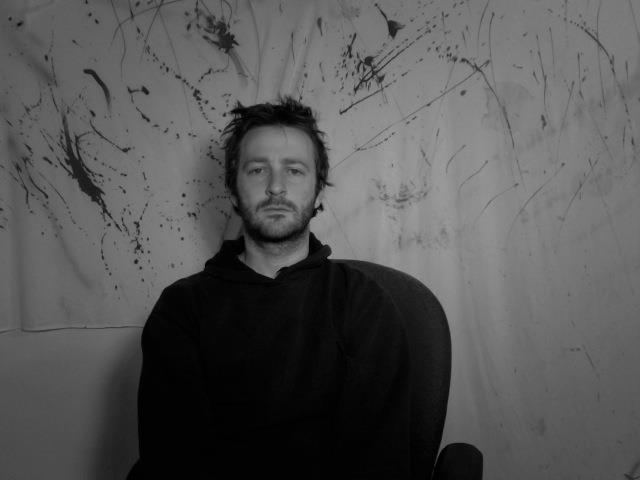
You always hear about how your understanding of language is so enriched by knowing another language, especially your writing. But, I don’t know, er, at least I don’t know how to really think about that or whatever.
Really? I mean, I totally buy that idea. I learned a second language for the first time pretty late, when I was 19 years old. You’re supposed to learn before puberty if you’re ever going to be any good at it, right? So I was super-late. Before that I was always a good English student, which means, I liked to read and I could write a correct sentence. But I didn’t know what I was doing. I had no conscious knowledge of English grammar for most of my life. I couldn’t understand why I should care, either—I could write a sentence well, so why should I know what the actual rules were, what you called the things that made up a sentence? I didn’t really understand parts of speech or anything like that until I started looking at other languages. But once I consciously understood the structure of English I could look at a sentence and break it down, rearrange it.
Plus it’s hard to have an idea of what English looks like or sounds like if you have no other point of comparison. I don’t know. I find it really helpful. But I can certainly understand how other people would be like “fuck that shit.”
No I’m the same. I’m also fucked in English grammar. But with Spanish I actually know the names of things. On twitter I saw you did a three-day novel writing contest. Why did you decide to do that and how was it?
Last summer I attempted to write a novel in a week. National Novel Writing month seems silly, so I guess I wanted to make it even sillier. That went pretty well. I got about 35,000 words in a week. That’s more or less a novel. So I tried to do a novel in three days. The math of this is not in one’s favor, as it turns out.
I think I’m a pretty slow writer compared to a lot of people. So part of doing these sorts of things is trying to stretch that. I was aiming for 30,000 words over the weekend, 10,000 words a day. I did 10,000 words on the first day. That’s not awful. 6000 words the second day. And 3000 words the third day. So I literally had an exponential decline. But I ended up at the end of the weekend with a draft of around 20,000 words that I think I can possibly turn into something.
Was this something you had been mulling around beforehand?
It’s something that I’d written some notes on beforehand. I didn’t want to actually start writing it beforehand, because I felt like that would violate the spirit of thing. But I had taken some notes. It’s sort of a re-writing of Kierkegaard’s book Repetition. And the title of my short book is, obviously, Repetition. Have you read Kierkegaard? He’s good. He’s an asshole. An incredible flaming asshole. Repetition was written under a pseudonym, Constantin Constantius. He always acted as though these pseudonyms were real people. In this case, he responded to several of his critics under the same pseudonym. All of his critics were like, “Kierkegaard, come on man, we know it’s you.” And he was like, “Nah, I don’t even know the guy. He’s clearly a very intelligent author, but no, me? I’ve never met him.”
In world of the book I was working on, Constantin Constantius is a historical figure. The book takes place at a conference for scholars on Constantin Constantius. So, you know. People get shot. It’s that sort of conference. — Connor Goodwin, Chicago Literati
authenticityisnolongeranoption
JTA @ Twitter
Podcast: James Tadd Adcox discusses ‘Repetition’
‘My Father Is Dying, a Memoir’, by James Tadd Adcox
Buy ‘Repetition’
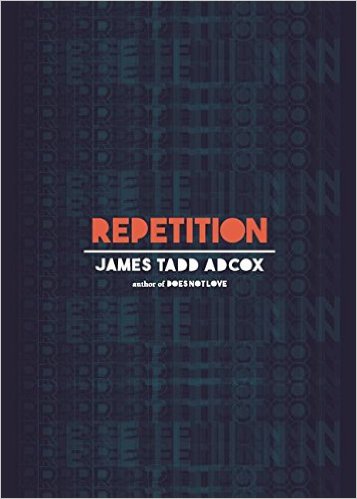 James Tadd Adcox Repetition: a novella
James Tadd Adcox Repetition: a novella
Cobalt
‘In Repetition, Soren Kierkegaard asks the question, Is repetition possible? Attempting to find an answer, he explores a love affair that ends in tragedy. In Repetition, James Tadd Adcox asks the question, Is repetition possible? Attempting to find an answer, he explores a love affair that ends in tragedy. In this short novel, at once a meditation on Kierkegaard’s work as well as a rewriting of it, the unnamed former president of the Constantin Constantius Society tells the story of an academic conference that ends in betrayal, crime, and a moment of pure and terrifying freedom.’ — Cobalt
Excerpt
The “survey of the literature” is fundamentally an act of repetition. How strange, then, that there exists to this point no comprehensive survey of the burgeoning scholarly work on nineteenth century philosopher and psychologist Constantin Constantius, who spent his life struggling with the question of repetition. This year members of the Constantin Constantius Society celebrated their namesake with the Society’s second annual conference. These notes, written in the conference’s immediate a ermath, do not presume to the sort of comprehensiveness the subject deserves; nevertheless, it is hoped that the following document will begin to rectify this omission in the literature to some small degree.
The author of these notes is a founding member of the Society as well as the Society’s former president. He — I — will not hide, when appropriate, his opinions on the actions of the Society, par- ticularly regarding the recent decision by the board on the matter of executive leadership. He — I — understands that true objectivity comes not from hiding one’s own biases or beliefs, especially when dealing with sensitive or controversial subjects, but stating both one’s subject position and the facts as clearly as situation and evidence allow1. But more on that at the appropriate time.
1 The present author is aware that a summary of the conference proceedings has been or will be offered up by former Society president and current interim acting president Professor omas Grinding, almost certainly a timid and life-less recitation of the panels and presentations, with perhaps some albeit slight
There was a sense of hopefulness at the outset of the conference. The Society, as well as many of the non-Society participants, recalled the inaugural conference, under the presidency of Dr. Grinding, as a disaster. Questions were raised in some quarters regarding the desirability of hosting a second conference at all. Other members had argued for ignoring the existence of the first and urged an inaugural “redo” — an idea which certainly had its appeal, given the Society’s philosophical concerns. However, holding in mind Constantius’s dictum that “the interesting can never be repeated,” it was determined, for both historical and scholarly reasons, that the Society must move forward, building off of the previous year’s mistakes — each member, as the vote was cast, thinking to him- or herself, if not in fact muttering aloud: “God save us from such interesting events as those of the previous year!”
The lead-up to the second annual conference, it may be humbly noted, was significantly more successful than the inaugural. Panelists attended from all regions of the United States and a good number from abroad, including Japan, China, Western and particularly Eastern Europe, and one scholar from Australia. A particular draw this year was the venerable F. Barnabus Floran- tine, a tremendous name in Constantius studies, who had refused, on theoretical grounds, to attend the inaugural conference, but had agreed to give the keynote at the second.
engagement with the ideas presented; but as Professor Grinding’s paper will not engage with the actual events of the conference — how could it, except in their shallowest, that is, their objective and outer manifestation? — the present summary is offered, in part, to fill these gaps. If it appears written in haste, this is because the present author recognizes the timeliness of such an engagement, undertaken while the body is still warm, so to speak; and he believes furthermore that there is only one in the position to do so.
Some Examples of Things That Are Not Metaphors | by James Tadd ADCOX
James Tadd Adcox, “Does Not Love”
James Tadd Adcox reads at Literary Firsts, AWP
*
p.s. Hey. ** Jamie McMorrow, Good morning to you, sir. Um, I don’t know yet about the musician reveal timing. It’s a good question. I guess that’s Gisele Vienne’s call. I think at least after we get further into the work with the musician. Right now he or she is awaiting our notes. Cool about London. Sure, I like Joan Mitchell’s paintings, for sure. I’ll be pretty busy until I head to NYC tomorrow afternoon, I guess. Big meeting today with the producer of Zac’s and my new film, after which we hope to be able to nail down exactly when we can start location scouting and casting and stuff. Did your Tuesday throw up anything especially pleasing? Love, me. ** Armando, Hi. Well, where have you already sent the manuscript? You just missed Civil Coping Mechanisms’ Mainline and Recurrent entry modes. I’m terrible on the agent question. I’ve never looked for one. I’ve always sort of ended up with an agent. I still think you should at least consider the self-publishing angle if nothing official pans out. As I’ve said, that how I started as did a lot of more challenging writers. LCTG is being shown in Brooklyn. A theater in the Kickstarter building, I think. I think you can still RSVP, I’m not sure. I don’t know much about the MoMa thing. I don’t know anything more about that than whatever’s listed in their site. No one’s explained what I’m doing at that yet. ** James Nulick, Hi, James! No, I just thought you were busy or chilling or writing or something else distracting. Ouch, very sorry about the injury, man. Very glad you’re uprighting. Yes, Tokyo, Oct. 23rd! I envy you severely. And for Halloween, no less. Take tons of pix. Shinjuku is a good central place to stay, obviously. Gosh, let me dwell on the must-see Tokyo stuff and get back to you. There’s a lot crucially cool stuff there. Nope, no photos in Spain. I seem to be out of the photo taking habit. Yes, we have to finish the video and turn it in on Nov. 1st, very true. NYC will be a speed-ball of a trip, literally in and out. Nuts. Yes, do check in pre-Tokyo and even from there if that works. Yay. ** David Ehrenstein, Yes, your legendary Ashbery tale! ** MANCY, Thanks a whole ton, S! ** Tosh Berman, Hi, Tosh. Thanks, buddy. Yeah, I saw that you were sliced out of Facebook briefly. Did you figure it out? I think the algorithms are kind of loosely targeted there? I was happy to see you back in my feed. ** Steevee, I like the name ‘theGrandmothers’. It’s super creepy. From my searchings, I feel like there must be dozens of youtube videos called that or close to that. I’ll see if I can weed it out. ** Dóra Grőber, Hi! At the festival? Let’s see, I saw … oh, I saw the 90 minute version of the new Terrence Malick film/ documentary ‘Voyage of Time’. That was big. He’s probably my favorite living film director. The film is very beautiful and ambitious and amazing, but, for the first time ever with his films, I had a problem with the voiceover narration, mostly with Cate Blanchett’s delivery, which I thought was kind of uninvolving and overly actor-y. I’m curious to see the shorter IMAX version which is apparently very different and isn’t voiced by Blanchett. And I saw the new Johnny To movie ‘Three’, which I thought was fantastic. And a few other genre-y films whose titles escape me that were varying degrees of okay. I’m so sorry to hear you’ve been under the weather, but very glad that you’re rising above that. I’ve never read a Harry Potter book. I’m too scared to, ha ha. I really like most of the movies, though. Yesterday, I worked a little, oh, and I met with Michael Salerno/Kiddiepunk, and we went over my new gif novel ‘Zac’s Freight Elevator’ to make everything was right and working properly, and now he’ll go ahead and design the ‘book’ and get it ready for publication. That was nice. Otherwise, just stuff, random, semi-productive. And your Tuesday? Are you feeling perfect again? ** New Juche, Hi, Joe! Well, I hope the opera goes to the UK. I don’t think anything is arranged yet, but, yeah, we’re very early on in it. It doesn’t premiere until 2019. Yes, I’ve been reading about the effect of the King’s death. It’s very interesting. Coming from the US, I feel like I can’t fully imagine what that would be like. It seems deeper and vaster or something than just the death of a President. Yeah, me too about more English Guyotat, especially the really difficult ones. Hm, I don’t know why I’m thanked in the Duvert book. Maybe I offered encouragement to Hedi at Semiotext(e) re: publishing it? Oh, I think it’s an excellent book. Eliade: I’m on it. Very best to you, Joe! ** MatthewSimmons, Mr. Simmons! Awesome, awesome, about the book. I’m very bated over here. ** _Black_Acrylic, Hi, Ben. I think I have a bit of that hearing damage too from my club/amp hugging days, but it’s never been diagnosed. I’ll go watch the trailer for ‘HyperNormalisation’ and see if I can find some kind of feed of it. Thanks, man! ** B, Hi. Thanks, man. I think I’ll stay healthy. I seem to be made of reasonably sturdy stuff. The NYC visit is super quick, so I’m not planning for anything extra-curricular. Maybe some spontaneous art looking or friend seeing or something. I’m saving most of my NYC ambitions for the lengthier November jaunt. Take care, Bear! ** Misanthrope, Funny that you’re so easily spooked by the deliberately spooky. I wouldn’t have thought. LPS is hooked up? What’s she like? ** Chris Dankland, No prob, man. See what happens. That crocodile howling is nuts! And eerie. And very sample-able. Yeah, I like the idea of a book of just the slave and escort profiles sans photos. A few publishers have queried me about that, but nothing’s come of the initial interest yet. Yes, the ones in ‘The Weaklings XL’ are from the blog series. Found poems. My morning is starting in a seemingly positive fashion. Yours? ** Cal Graves, Hi. I don’t think any kind of crusade against Google would work. Look what it took for them just to free my little data, you know? They proved themselves to be utterly disconnected and heartless and dishonest. Mm, I feel like with the slave/escort profiles, there would either need to be the impression that the photos are of the profile-makers themselves or there should be no photos, for some reason. I feel like their power lies in their realness or, at least, in a very convincing impression of their realness maybe? I don’t know. Ha, well, the Sitges festival gave us goodie bags, and their logo was King Kong crushing a plane in his hand, and they gave the guests a rubber, squeezable toy of that King Kong image, and I kept that. Have a fine and hopefully even fun day! ** Right. There are four books I read and loved in recent days, and, as always, I highly recommend them to you. See you tomorrow.





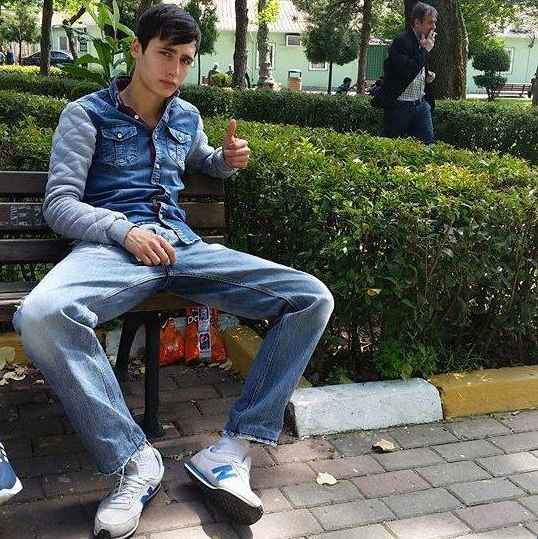
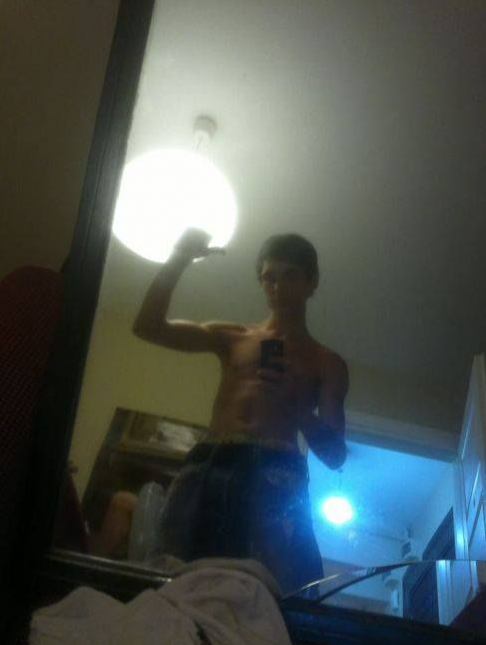

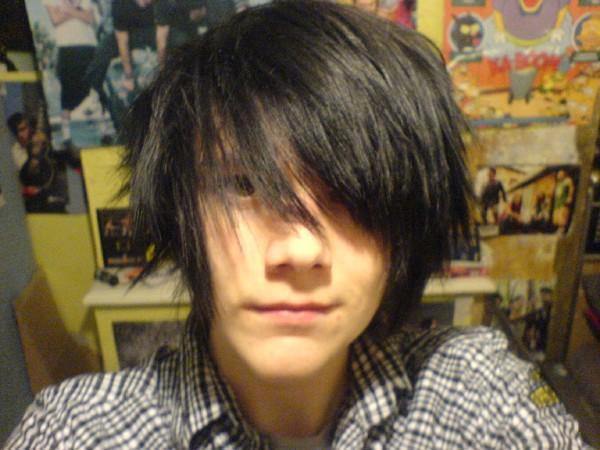
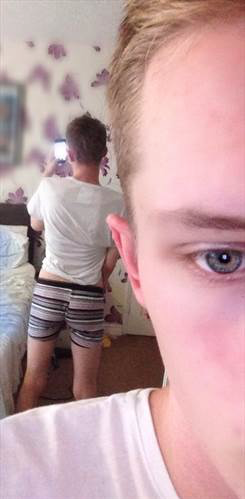






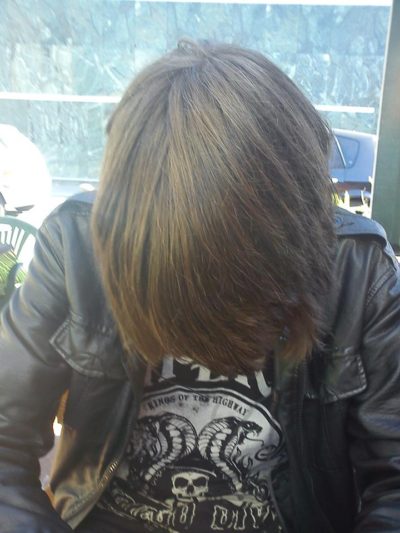



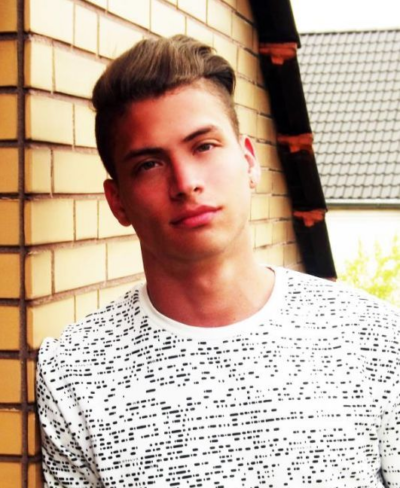




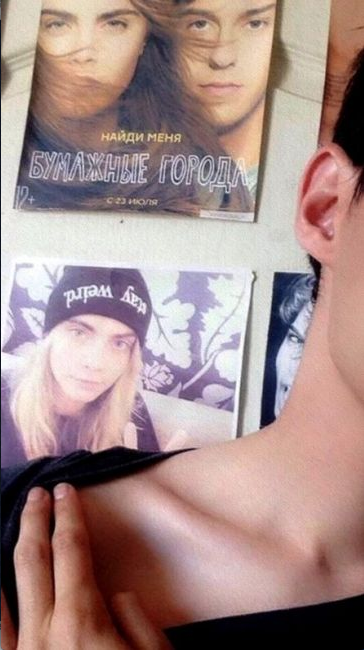




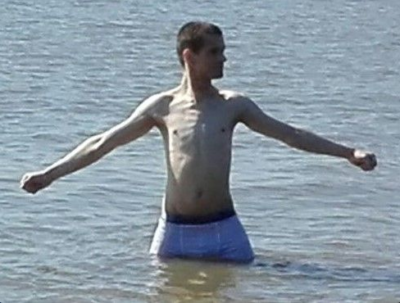



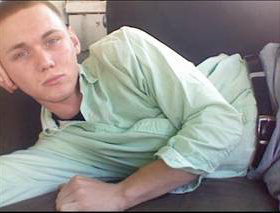











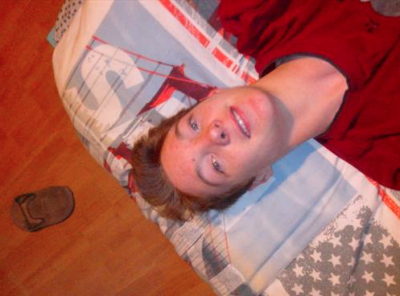
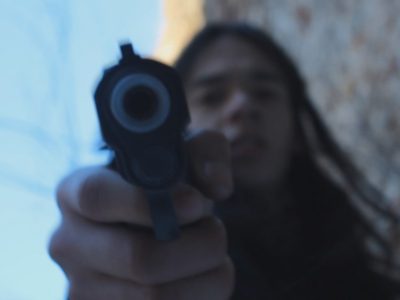


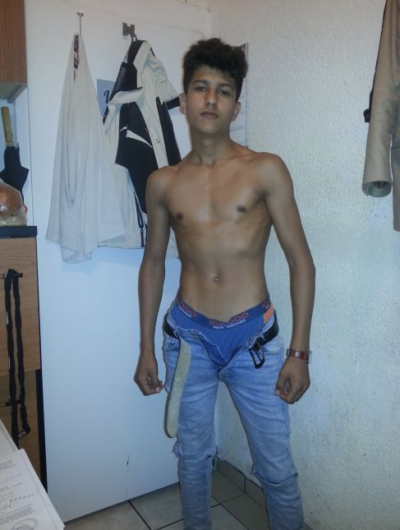
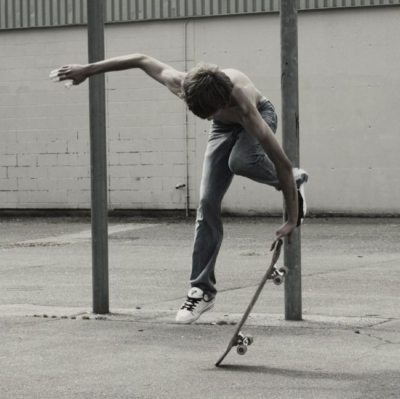






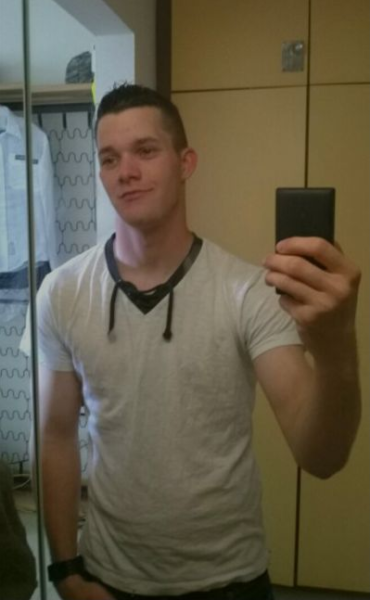







 Now available in North America
Now available in North America 